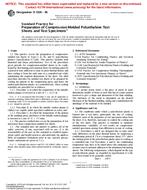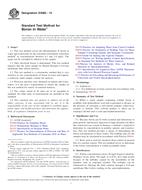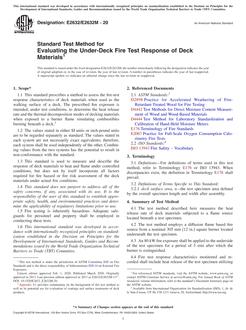1.1 This test method covers an analytical procedure for determining the transmissivity and storage coefficient of a confined aquifer taking into consideration the change in storage of water in overlying or underlying confining beds, or both. This test method is used to analyze water-level or head data collected from one or more observation wells or piezometers during the pumping of water from a control well at a constant rate. With appropriate changes in sign, this test method also can be used to analyze the effects of injecting water into a control well at a constant rate.
1.2 This analytical procedure is used in conjunction with Test Method D4050.
1.3 Limitations – The valid use of the modified Hantush method (1) is limited to the determination of hydraulic properties for aquifers in hydrogeologic settings with reasonable correspondence to the assumptions of the Hantush-Jacob method (Test Method D6029) with the exception that in this case the gain or loss of water in storage in the confining beds is taken into consideration (see 5.1). All possible combinations of impermeable beds and source beds (for example, beds in which the head remains uniform) are considered on the distal side of the leaky beds that confine the aquifer of interest (see Fig. 1).
1.4 The values stated in SI units are to be regarded as standard. No other units of measurement are included in this standard.
1.5 This standard does not purport to address all of the safety concerns, if any, associated with its use. It is the responsibility of the user of this standard to establish appropriate safety and health practices and determine the applicability of regulatory limitations prior to use.
Product Details
- Published:
- 08/01/2010
- Number of Pages:
- 9
- File Size:
- 1 file , 260 KB


